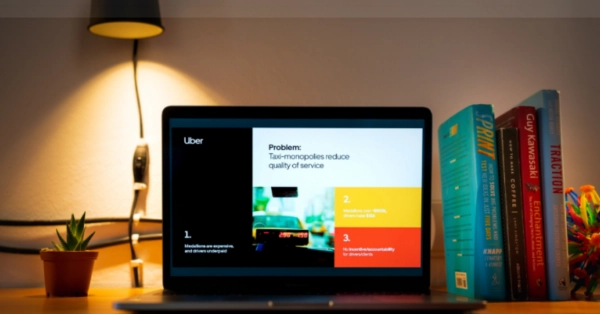Theory of change (ToC) is a flexible methodology for planning your idea or project, focusing on impact and measuring. It is also called the “Logic Model” and it lets you design the building blocks of your strategy.

It can be represented in a visual diagram, as a narrative, or both. A theory of change can be developed at the beginning to help with strategic planning of your business idea, or to describe the ongoing business so you can evaluate it.
It is helpful to involve a variety of stakeholders when you develop a theory of change – you could include team, donors, beneficiaries, partners and funders. The development process, and the thinking involved, is often as important as the diagram or narrative you produce.
A theory of change should be:
- credible – based on previous experience and insight from your different stakeholders or relevant research where appropriate
- achievable – you have the necessary resources to carry out the intervention
- supported – your stakeholders will be involved in defining and agreeing your theory of change, which builds support for it
- testable – a complete description of your work and its outcomes, with prioritized outcomes for measurement and indicators to collect data against them.
This is the process for laying out a Theory of Change
- Plan your process
Begin by deciding the purpose of your theory of change: are you using it to plan new work or is it a description of work that you are already doing? Will you be using it for evaluation? Who will be using it most and how? The purpose of your theory will affect the process you use and who you involve.
Once you are clear about the purpose of your theory of change, think about who you want to involve in the process and why.
If you are using your theory of change to plan new work you will need to involve key decision makers in your organisation, if you already have them. If your theory is describing existing work, you will probably want to involve people with experience in the area your are developing your business idea.
You also need to think about:
- how much time you have to commit to the process
- how much of the process you want to run face-to-face (for example, through workshops or meetings) and how much you want to consult on documents
- whether you want to involve an external consultant.
2. Collect evidence of need and context
To be credible, a theory of change should be rooted in a clear understanding of the issue you want to address. If you’re developing a theory to plan new work, you’ll need to collect three main types of evidence to help you:
- evidence of need. This helps you to understand why your intervention is needed and the specific requirements of your beneficiaries.
- evidence of context. This might include an analysis of other service providers and support available to your beneficiaries, or of other internal and external factors that could affect your work.
- evidence of the effectiveness of other ideas seeking to bring about your intended outcomes (these could be ones you have tried before, or interventions others have run). This may help you to decide on a particular way of working that’s most likely to bring about the type of changes you want to see.
It is helpful to collect and share evidence before bringing people together to develop the theory of change; this will make your theory of change work more effective.
3. Agree your intended impact
Your impact is the starting point for your theory of change, the goal towards which everything is directed. Your impact statement should clearly describe the broad or long-term difference you want to see happen.
If you have good insights into the needs of your beneficiaries (see step 2), you will be better placed to develop an impact statement that is reflective of what they want to change in their lives and/or in the wider system.
You may also want to think about how your impact statement fits in with local strategic priorities or funding programmes, so that you can place your work in a wider context. This could involve looking for relevant research or identifying connections between your work and those broader priorities.
4. Articulate your long-term outcomes
Next, work backwards from your impact to think about the changes that need to happen in order to achieve it. These are sometimes called ‘necessary pre-conditions’ – in other words, things that need to change before your long-term impact can happen. You may be able to identify these by thinking about the causes of the main issue you are trying to address with your work.
Try to have no more than about four long-term outcomes – beyond this, your theory can become too complex.
5. Map your intermediate outcomes backwards
Next, work backwards and plot the preceding stages in much greater detail. You will need to consider what changes need to happen before your long-term outcomes can occur.
There will also be other changes that need to occur before these outcomes can come about.
For example, for young people to become more motivated to work, they need to have an increased awareness of the benefits of working and a greater interest in working.
Once you have defined your outcomes, you can show the order in which they will occur. For each outcome, think about what change will be needed before it can happen, and if and how it relates to other changes.
It is generally best to work backwards. However, if you are describing a project that already exists, it is possible to combine working backwards from the impact and working forwards from the work you already do.
6. Identify outputs
You are now ready to start thinking about what outputs (products, services or facilities) will help you to bring about the outcomes you have identified.
For a new piece of work, this will involve thinking creatively about the outputs that will be most effective in bringing about your desired outcomes, and when they are best delivered. To help with this, you could consider the outcomes you hope will occur through your work, then review external research to see what kinds of outputs have brought about these outcomes in the past (see more in step 2).
If you are creating a theory of change for an existing project, plot your existing activities and outputs. This is a good chance to discuss how well outputs are delivering your anticipated outcomes and may lead to some revision of what you do, and how you do it. At this point, it is also helpful to explore which outcomes your work directly contributes to, and which ones are beyond the scope of your work. If you are using your theory of change for evaluation, this step is essential to ensure you evaluate the right things.
7. Clarify assumptions
Any theory of change is rooted in assumptions. Assumptions are the conditions that need to be in place to make the theory work; they explain the logic behind the overall programme and behind the causal links (for example, showing that an output will lead to an outcome, or that one outcome will lead to another) in the theory.
Assumptions are usually unstated – we may think they are so obvious that we don’t need to mention them. However, exploring assumptions is important: they can affect how successful an intervention is and may need to shape how you deliver your intervention or be tested out in your evaluation – or both.
Assumptions can be about:
- the links between inputs and outputs, outputs and outcomes, and outcomes and impact
- the links from one outcome to the next
- the quality and reach of your intervention
- the roles played by other actors
- the overall project rationale.
Once you have plotted out your theory of change (steps 2 to 6 above), you can reflect on the assumptions that underpin it. As well as considering the bullet points above, you could ask ‘what beliefs, values and perspectives have shaped our theory of change?’
As you identify assumptions, consider which are critical – that is, those on which your theory rests, and which may derail your project if they turn out to be false. If, when using theory of change for planning a new piece of work, you identify very significant critical assumptions underlying that work, you may need to rethink your plans – or at least have risk mitigation plans in place.
If you are using theory of change for evaluation, you will need to monitor critical assumptions carefully and test them through evaluation. Gathering early evidence about these may be important to ensure your work stays on track.
Articulating other, less critical, assumptions may help you to:
- identify things you could do to increase the chances of the theory working
- identify other organisations or stakeholders you could work with
- clarify roles and responsibilities of those involved in delivering your intervention.
For all assumptions (critical and others) consider if there is existing evidence to support them – you might find this in academic literature, reports from your organisation or others and in the expertise and experience of key stakeholders. For planning purposes, understanding the existing evidence base may help you decide if your intended way of working is likely to be effective. For evaluation, it can be helpful to focus your data collection on areas where there is little or no existing evidence to build your understanding of what works and in what context.
If you are testing a new way of working, there won’t be evidence to gather before you start delivering your intervention. In his case, make sure you plan data collection carefully so you can build up your own evidence base.
8. Establish timelines and plan resources
Write in timelines in your accompanying notes for when you expect to see the activities and outputs happen. This should shape stakeholder expectations of what can be achieved through your intervention. It will also help you plan when to collect data.
If you think through the work associated with the delivery of your outputs, this will help you to plan the resources you will need and to set a budget for the intervention. Remember to bring to the surface assumptions about the amount of staff and volunteer time that will be needed or about the level of skills that will be necessary and available to you for delivering the intervention. When you evaluate, one question to consider may be whether appropriate resources were planned and delivered.
9. Produce your diagram and narrative
As you develop your theory of change you will need to make it available in a useful format. Most people find a diagram or map helpful.
It’s also helpful to write up a narrative theory of change as a more comprehensive description of the theory, as diagrams can be difficult to understand on their own (especially for people not involved in developing them, or a long time after you created them). Your narrative should include:
- a description of the process by which the theory of changed was developed (and who was involved, and how)
- a description of the intended impact
- a summary of the need and context
- a description of the outcomes leading up to the impact
- a description of outputs – how your work will bring your intended outcomes about (you could mention inputs – human, material or financial resources – here too)
- a description of how you will work with other actors
- a reference to timelines – when you think things will happen
- a description of critical assumptions, and how you will measure them
- a link to your monitoring and evaluation framework, if there is one
Think about how you will consult with stakeholders on your diagram and narrative, and make sure you allow enough time to discuss and incorporate their comments.
10. Get ready to use your theory of change
Now you’ve created your theory of change, don’t forget to use it. A theory can help you to plan your project or feed into your organisation’s strategy. It can also help you to communicate succinctly about your work and the change it makes.
A theory of change should be a living document – it should be revisited as new evidence emerges or as you develop new ways of working. Evaluation can help provide evidence for whether your theory of change works, and also suggest where your theory needs to be modified.
What can a theory of change be used for?
Planning new work
This is not about establishing a linear causal relationship between what you deliver and what you want to achieve. Instead, ToC breaks down broad, long-term changes into a series of smaller changes at different levels to understand how they are linked. A brilliant aspect of ToC is that it allows you to visualise how and what type of activities are connected with your envisaged change.
Evaluating work
In broad terms, evaluation means the process of assessing the value of something. We carry out evaluations to learn from our successes as well as our failures so that we can improve our work and achieve maximum impact. You are planning for impact when drafting your ToC. By following this route map, you have a ready-made list of intended changes linked to specific activities (or outputs). This helps you identify what you will measure (your indicators) to understand whether the changes are happening, how and for whom. Developing indicators isn’t easy, but having a good ToC means you are halfway there.
Communicating your work
ToC allows you to clearly and succinctly let others know what your organisation, project or programme is trying to achieve and how you are going about it. This is handy when you need to demonstrate your work .























